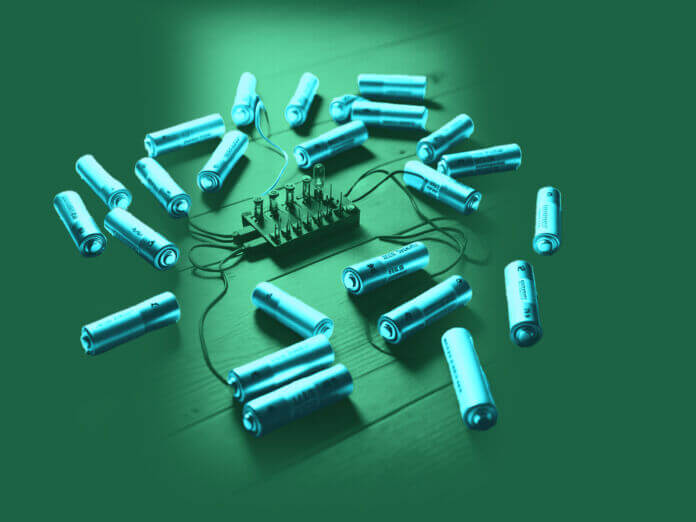
Selecting the right battery for IoT devices is paramount to ensuring optimal performance and longevity. When selecting a battery that aligns with the specific requirements of the application, guaranteeing a reliable and long-lasting power supply, one must consider several factors.
Battery Choice Considerations
Battery Type: Electrochemistry, Capacity, and Energy Density
The choice of battery should consider the application and device form factor. Coin cell batteries, although compact and suitable for low-power devices, have limited capacity and are non-rechargeable.
Lithium-ion (Li-ion) or lithium-polymer (Li-poly) batteries, offering higher capacity, rechargeability, and longer lifespans, are suitable for devices with higher power demands and longer lifecycles. Customized batteries may be necessary for devices with unconventional form factors.
Capacity, measured in mAh or Wh, refers to the amount of charge a battery can store. Energy density relates to the amount of energy stored per unit volume or weight. Selecting a battery with sufficient capacity and energy density ensures extended device operation without frequent battery replacements.
Voltage and Discharge Characteristics
Ensure that the battery voltage aligns with the device’s voltage requirements over its entire lifespan. Understand the discharge rate influenced by the application’s use, such as data transmission frequency, intensity, and duration. These factors impact battery characteristics, including discharge rate and voltage drop over time, ultimately affecting power consumption and runtime.
Temperature
Temperature significantly affects battery performance. Extreme temperatures can impact capacity, discharge rate, and lifespan. Select a battery with an operating temperature range suitable for the device’s environmental conditions.
Battery and Device Shelf Life
Consider battery conditions, such as self-discharge, both before integration into the IoT device and once integrated. Aging and self-discharge affect performance, so understanding these parameters during product development and post-market deployment is crucial.
Cost and Lifespan
Evaluate upfront cost and total cost of ownership over the battery’s lifespan. Assess the battery’s expected lifespan and balance it with the device’s operational duration to optimize cost-effectiveness.
By considering these factors, developers can choose the right battery for their IoT devices, ensuring optimal performance, longevity, and cost-effectiveness.
Power Profiling
As the prototype of your IoT device becomes available, initiating power profiling and estimating battery life becomes essential. This involves gaining a comprehensive understanding of the device’s configuration and power consumption characteristics within its specific deployment context.
Consider the following details when conducting power profiling:
- Hardware and Sensor Configurations: Analyze the components and sensors used in the device and their power consumption characteristics. Understand how different hardware configurations impact energy usage.
- Firmware Settings: Examine the firmware settings and configurations to identify any potential areas where power consumption can be optimized. Adjust settings and parameters to achieve more efficient power usage.
- Communication Parameters: Evaluate the communication parameters used by the device, such as transmission frequency and data rate. Analyze how different communication settings affect power consumption and battery life.
- Use Cases and Corner Cases: Consider the different use cases and scenarios in which the device will be deployed. Investigate how the device’s behavior and power consumption vary under different conditions. Pay special attention to corner cases that may have unique power consumption patterns.
Continuous benchmarking is crucial throughout the product development process. Utilize UART clever printouts and correlate them with power consumption to identify specific components or features that may be draining energy.
This analysis will provide valuable insights into areas that can be optimized for improved power efficiency. Remember to turn off UART once the analysis is complete to avoid any impact on the final product.
Additionally, consider network variables that can impact power consumption. Import network log files to understand how factors like distance to the gateway or Node B, weather conditions, and device density within the network influence power consumption. These variables can significantly affect how the battery is drained and should be taken into account when estimating battery life.
Gain Valuable Battery Knowledge
By iteratively calculating battery life based on power consumption profiles throughout the development project, developers gain valuable knowledge and intuition about the factors that affect the power profile. This understanding allows them to maintain the desired power profile despite changes in the development stack, ensuring optimal power usage and battery life.
- SEO Powered Content & PR Distribution. Get Amplified Today.
- PlatoData.Network Vertical Generative Ai. Empower Yourself. Access Here.
- PlatoAiStream. Web3 Intelligence. Knowledge Amplified. Access Here.
- PlatoESG. Carbon, CleanTech, Energy, Environment, Solar, Waste Management. Access Here.
- PlatoHealth. Biotech and Clinical Trials Intelligence. Access Here.
- Source: https://www.iotforall.com/selecting-the-right-battery-for-iot-applications



